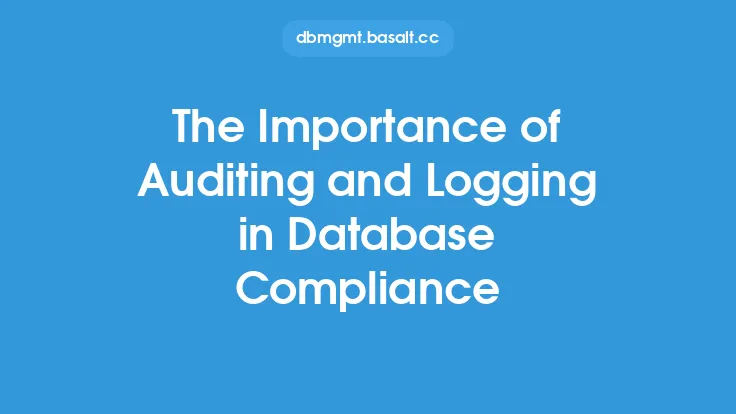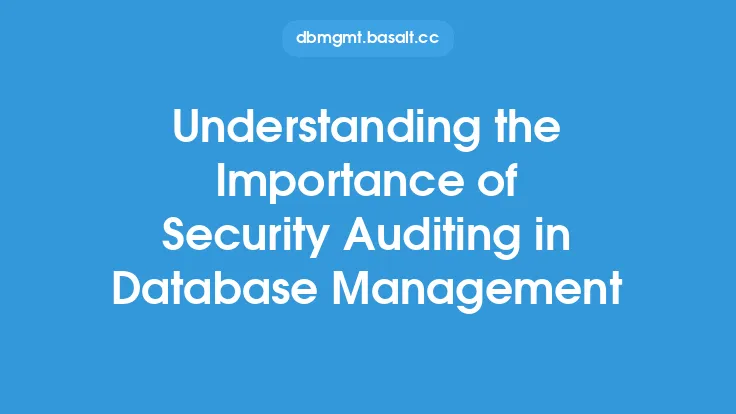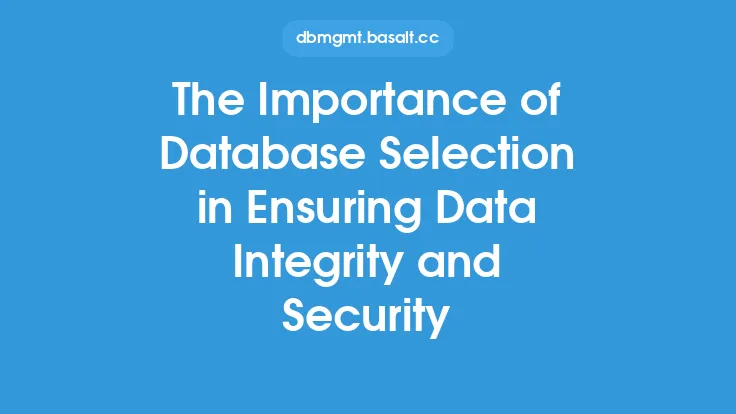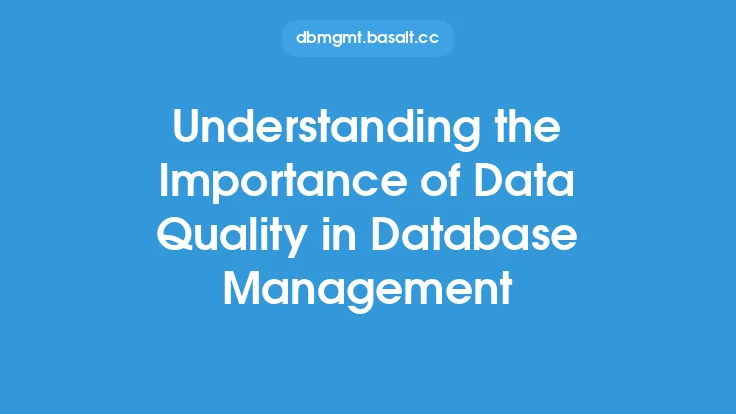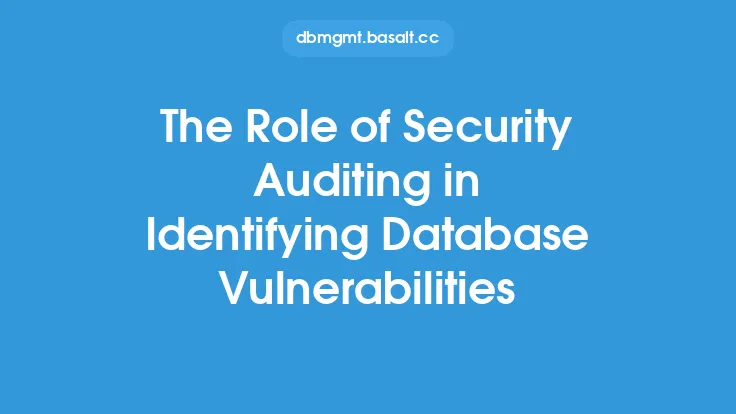In today's data-driven world, databases play a critical role in storing and managing sensitive information. As a result, ensuring the security and integrity of databases is of paramount importance. One key aspect of database security is auditing, which involves monitoring and tracking all activities that occur within a database. Database auditing is essential for maintaining regulatory compliance, and its importance cannot be overstated. In this article, we will delve into the world of database auditing and explore its significance in ensuring regulatory compliance.
Introduction to Regulatory Compliance
Regulatory compliance refers to the process of ensuring that an organization's database management practices adhere to relevant laws, regulations, and industry standards. This includes compliance with data protection laws, such as the General Data Protection Regulation (GDPR) and the Health Insurance Portability and Accountability Act (HIPAA), as well as industry-specific regulations, such as the Payment Card Industry Data Security Standard (PCI DSS). Regulatory compliance is critical for organizations that handle sensitive data, as non-compliance can result in significant fines, reputational damage, and even legal action.
The Role of Database Auditing in Regulatory Compliance
Database auditing plays a vital role in ensuring regulatory compliance by providing a detailed record of all database activities. This includes tracking changes to database structures, monitoring user activity, and detecting potential security threats. By analyzing audit logs, organizations can identify potential compliance issues and take corrective action to prevent non-compliance. Database auditing also helps organizations to demonstrate compliance with regulatory requirements, which is essential for passing audits and avoiding fines.
Key Components of Database Auditing
Effective database auditing involves several key components, including:
- Audit logging: This involves capturing and storing all database activities, including changes to database structures, user logins, and queries executed.
- Audit trails: This refers to the chronological record of all database activities, which can be used to track changes and identify potential security threats.
- Alerting and notification: This involves setting up alerts and notifications to inform database administrators of potential security threats or compliance issues.
- Compliance reporting: This involves generating reports that demonstrate compliance with regulatory requirements, which can be used to pass audits and avoid fines.
Technical Aspects of Database Auditing
From a technical perspective, database auditing involves several key concepts, including:
- SQL logging: This involves capturing and storing all SQL statements executed against a database, which can be used to track changes and identify potential security threats.
- Database triggers: This involves setting up triggers that capture and store database activities, such as changes to database structures or user logins.
- Audit tables: This refers to the tables that store audit logs, which can be used to track changes and identify potential security threats.
- Database encryption: This involves encrypting audit logs to prevent unauthorized access and ensure the integrity of sensitive data.
Benefits of Database Auditing
The benefits of database auditing are numerous and significant. Some of the key benefits include:
- Improved security: Database auditing helps to detect and prevent potential security threats, which can help to protect sensitive data and prevent data breaches.
- Regulatory compliance: Database auditing helps organizations to demonstrate compliance with regulatory requirements, which can help to avoid fines and reputational damage.
- Increased transparency: Database auditing provides a detailed record of all database activities, which can help to increase transparency and accountability within an organization.
- Improved performance: Database auditing can help to identify performance issues and optimize database performance, which can help to improve overall system efficiency.
Challenges and Limitations of Database Auditing
While database auditing is essential for regulatory compliance, there are several challenges and limitations that organizations must be aware of. Some of the key challenges and limitations include:
- Data volume: Database auditing can generate large volumes of data, which can be challenging to store and analyze.
- Performance impact: Database auditing can impact database performance, which can be challenging to optimize.
- Complexity: Database auditing can be complex and require significant technical expertise, which can be challenging to implement and manage.
- Cost: Database auditing can be costly, which can be challenging for organizations with limited budgets.
Best Practices for Implementing Database Auditing
To implement database auditing effectively, organizations should follow several best practices, including:
- Develop a comprehensive auditing strategy: This involves identifying the key components of database auditing and developing a strategy that meets regulatory requirements.
- Implement audit logging and trails: This involves capturing and storing all database activities, including changes to database structures and user logins.
- Set up alerting and notification: This involves setting up alerts and notifications to inform database administrators of potential security threats or compliance issues.
- Regularly review and analyze audit logs: This involves regularly reviewing and analyzing audit logs to identify potential security threats and compliance issues.
Conclusion
In conclusion, database auditing is a critical component of regulatory compliance, and its importance cannot be overstated. By providing a detailed record of all database activities, database auditing helps organizations to demonstrate compliance with regulatory requirements, detect and prevent potential security threats, and improve overall system efficiency. While there are several challenges and limitations to database auditing, following best practices and implementing a comprehensive auditing strategy can help organizations to overcome these challenges and ensure regulatory compliance. As the regulatory landscape continues to evolve, the importance of database auditing will only continue to grow, making it an essential component of any organization's database management strategy.
